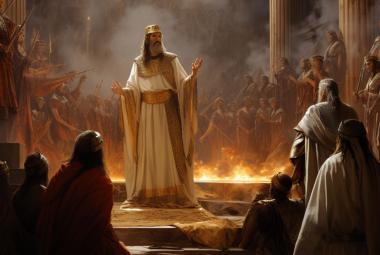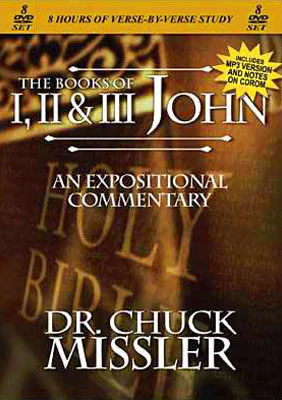John wrote five books in the New Testament: the Gospel, these three letters, and the Book of Revelation. These letters include a sermon and two personal letters, one of which may have been written to Mary, the mother of our Lord.
John’s Gospel deals with our past: Salvation. Revelation deals with our future: His Glorious Appearing. John’s first epistle deals with our present: Sanctification, and it has been called the New Testament sanctum sanctorum. It takes God’s child into the fellowship of the Father’s home. John’s band-width extends from the practical, the “Christian’s Bar of Soap” (1 John 1:9), to the hyperspace of our resurrection body (1 John 3:2)!
The early church in the 1st century was under attack from both the inside and the outside. So what has changed? It should not surprise us that the Holy Spirit has anticipated every conceivable form of attack and diversion, and these three epistles are full of insights that are timely for each of us—at the personal level as well as at the corporate.
John was writing during a time when the very deity of Christ was a major issue within the Church. As it is today! Yet John’s words are intimate and personal—he is writing to the individual believer, and with some very specific purposes in mind. Are you really saved? How do you know? Are you sure? It is not enough to claim that you are saved.
1 John
As in other places in Scripture, 1 John has a heptadic structure: the seven traits of being born again; the seven reasons why this epistle is written; the seven tests of Christian genuineness; and, the seven tests of honesty and reality. 1 John deals with “truth versus error” by highlighting seven contrasts:
- Light vs. Darkness — 1:5-2:11;
- The Father vs. The World — 2:12-2:17;
- Christ vs. the Antichrist — 2:18-2:28;
- Good Works vs. Evil Works — 2:29-3:24;
- Holy Spirit vs. Error — 4:1-4:6;
- Love vs. Pious Pretence — 4:7-4:21;
- The God-Born vs. Others — 5:1-5:21.
2 John
The second epistle of John is a personal one to the “elect lady.” I’m fascinated that no one speculates about who this elect lady is, but I think it’s obvious—it must be Mary. At the Cross, Jesus consigned his mother to the apostle John. (He didn’t consign her care to his half brothers Jude, James or the others. And that was appropriate because she obviously was a believer and they were not at the time.)
So when John wrote a letter late in his life, to the “elect lady,” I suspect that, unless there is any evidence to the contrary, it was to Mary. If so, it has a number of profound implications. John here concentrates on the practical walk in love, the divine insistence on love and the human expression of love.
The doctrinal elements are warnings against error, false teachers and false charity. (He instructs her to not extend the slightest hospitality to false teachers because it could be construed as an endorsement of their teachings, etc. This is in contrast to the admonitions to the rest of us.) In some respects 2 John is a rebuttal to the Gnostics who denied that Jesus came in the flesh, but that subject is not the main focus. John covered that in his first letter, which was really a sermon.
3 John
The third epistle is a very short report card to Gauis, the encourager who had done well, and to two others: Diotrophes, the gossip who was said to have been evil by way of his pride and strife; and Demetrius, who was commended as an example to be imitated.







